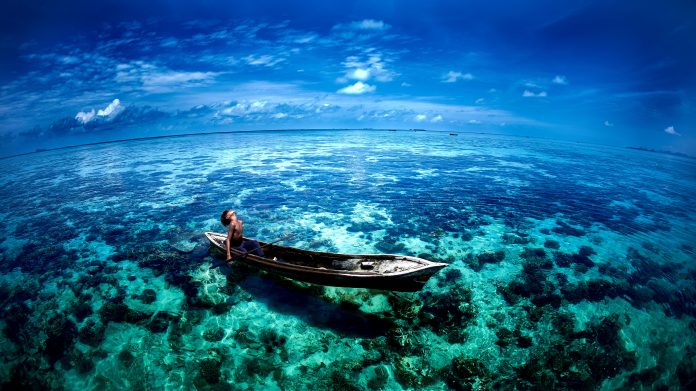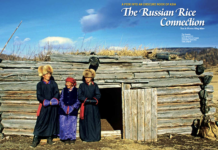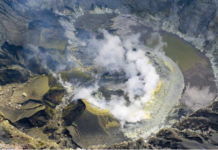Street/People Category January 2020 Winner, titled “Zen It Out”, by Zon Hisham Bin Zainal Abidin, in Sabah, Malaysia
As ASIAN Geographic’s annual Images of Asia (IOA) 2020 Photo/Videography Competition looms closer, submissions to our IOA Monthly competition – the precursor to our annual event – are pouring in. We have received stunning photos across the categories, and are now featuring our monthly winners in an exclusive interview!
Below is our interview with one of this month’s spotlight, Zon Hisham, the IOA Monthly January 2020 Winner in the Street/People category, selected from December 2019 entries.

AG: What is the story of your beginning and journey to creating great images?
Zon: Like most seasoned photographers, it all began with a gift, a Kodak roll film camera, when I was 11. The Brownie 127 is from the Kodak Brownie series of simple point and shoot camera models with plastic bodies. The camera is still functional till today and I keep it in my dry-box, together with other gears.
I grew up in Muar, then a small coastal and sleepy town in the state of Johor. Those years were the foundation as they imprinted much of who I am today. I received my education at the prestigious High School Muar where I first came into contact with friends who were fortunate enough to own SLR roll film camera, which I couldn’t afford any at that time. As members of the Photography Club, the school’s darkroom became a frequent hangout spot.
In every genre of photography, creating great images require patience and passion. It is about the craving and the lust to craft beautiful moments. But for the genre of photography (people, street, lifestyle, etc) that I mostly worked with, it is also about being inside the action and connecting to the subject’s soul. Great images are not just about being in the right place at the right time, but also being in a place long enough for the right moment to arrive and find you. It is important to connect to the subject’s inner self, waiting and carefully watching their gestures and triggering the shutter at the peak of their action, which will result in an intense and powerful image.
AG: How would you define your style and concepts you enjoy exploring?
Zon: Photography is my calling, my profession, and the thing that will never get me tired of picking up my camera and ‘going to work’. I photograph subjects the way that they made me feel and the way they touch my emotions. It is an honest concept and it’s the best way to describe my approach to the craft. During my early years as a photographer, I tended to lean towards the style of great photos that I saw in magazines. It wasn’t after many years that I realized I was shooting someone else’s shots. Though beautiful and colourful, they were sadly lacking the feel that I desire. After realising that, I began shooting from my gut – to shoot just for my satisfaction and that is what matters. Always avoid the herd mentality where you can be influenced by others to adopt certain behaviors on a largely emotional, rather than rational basis.
AG: What is great photography to you, and are there any photographers you would like to work with?
Zon: Good usage and quality of light, composition, balance and perspective will only take you so far. But great photography is one that causes an emotional response. This could be happiness, curiosity, sadness or anger. When a photo is able to stir and evoke your emotion, put you in a particular moment in time and tell a story, then that is truly great photography.
The first name that came to mind is Tariq Zaidi. He is a genius at capturing the dignity, the purity and soul of people within their environment. His work focuses on documenting social issues, inequality, endangered communities and traditions from around the world. His work is simply phenomenal and doing a project with someone like Tariq who has won many major international photography awards, is every photographer’s dream.
AG: What is your preferred imaging gear to work with and why?
Zon: I am a Nikon shooter and my work leans towards documenting environmental portraits. For this style of portraiture, my 35mm prime will be my number one choice. This lens fits the vision and the circumstances of any given job, it is flexible, fast and wide enough to capture the subject and their environment. I am able to work in a tight space and get to stay within comfortable speaking distance with the subject. For tighter shots, I switch to the Nikkor 85mm prime. This lens combines both incredible image quality, artistic blur and very little distortion. And the 3rd lens in my arsenal is an 8-15mm fisheye lens.
Photographers will either love or loathe this lens. I love working with this lens as it opens up avenues for creating a compelling composition. When doing an overseas project, I will only include those 3 lenses in my toolkit as they pretty much cover most of my photographic situations. This will enable me to adapt all my senses to a certain focal length, to be able to observe the depth of a situation rather than being distracted by choices.
For capturing great portraiture, I light up my subjects with the Onsmo Z4 and Porta 60 softbox combo. They are portable and light enough to be carried to remote locations.
AG: What is your next Asia destination to explore and why?
Zon: There are 48 countries in Asia, offering regions of great historical values with cultural and ethnic diversities. However, due to time and financial constraints, I am focusing energy and creativity on the countries in South and Central Asia. At the top of the bucket list are Afghanistan and Uzbekistan.
Afghanistan is truly an eye-opening destination for adventurous travelers. Contrary to popular misconceptions, Afghanistan is not all about the Taliban. There are many ethnic groups like the Pashtun, Tajik, and Hazara, offering differences in cultural values, traditional sports like Buzkashi (grab the goat), dressing and even dining etiquette. Different regions of the country are ruled by their own traditions, creating a truly multicultural nation. All these and combined with the harsh environment make this landlocked mountainous country a photographer’s haven.
Situated north of Afghanistan is Uzbekistan, home to some of the Silk Road’s most iconic sights like Khiva, Bukhara, and Samarkand. These are places where photographers are able to engage with the locals, even with the barriers of language. This will translate into establishing a deeper connection with the locals and the resulting images may be much more powerful and emotional.
AG: Can you share more about your current and upcoming projects?
Zon: My current project is an unfinished work in Bangladesh. I would like to document the crisis of climatic change that is adversely affecting the nation. Rains during monsoon season are seasonal and the monsoon itself is seasonal too. But these storms and rains are now stronger and heavier than ever. Bangladesh is a flat country and changes in the global climatic condition made the country vulnerable to rising sea levels. More people are being driven from their homes and land by frequent and severe flooding. These climatic migrants will normally head to the capital city of Dhaka looking for jobs. The Guardian reported that every day, another 2,000 people move to the Bangladeshi capital, making it the most densely populated city on earth.
Photography is not limited to stunning panoramas, blue skies, sapphire waters and emerald isles but extends beyond that. This is a location where you are able to document the alarming pollution level that is hard hitting the city, the social sufferings in urban slum areas, the tears and the homeless. I am hoping to be able to arrange for another trip to Bangladesh soon.
Another upcoming project is to lead a photography excursion to the Royal Belum State Park in April. This pristine tropical rainforest is home to the Jahai tribe. Their village is only accessible by speedboat which takes about an hour to reach. The Jahai are hunters, fishers and collectors, survive on game, yam and fruit from the forests. This excursion will document their culture and lifestyle by getting up close and personal with the tribe.
Congratulations once again to Zon Hisham for being the Images of Asia (IOA) Monthly January Winner in the Street/People Category! You can check out Zon’s Instagram page here.
Read about the other four January Photographer Features of Images of Asia Monthly Winners:
1. Black & White Category Winner, titled “Caravan”, by Abhishek Nandy in Ladakh, India
2. Photojournalism Category Winner, titled “Worship of Eid celebration at Taj Mahal on 12th August”, by Ann Chanporn in India
3. Landscape Category Winner, taken in Uttarakhand, by Akshay Upadhya
4. Wildlife Category Winner, taken in Pulau Ubin Singapore by John Crisostomo
Follow Asian Geographic Instagram for latest updates.
Love shooting photos of the vast and beautiful Asia? Submit your entries today! More details of Images of Asia Monthly here.











